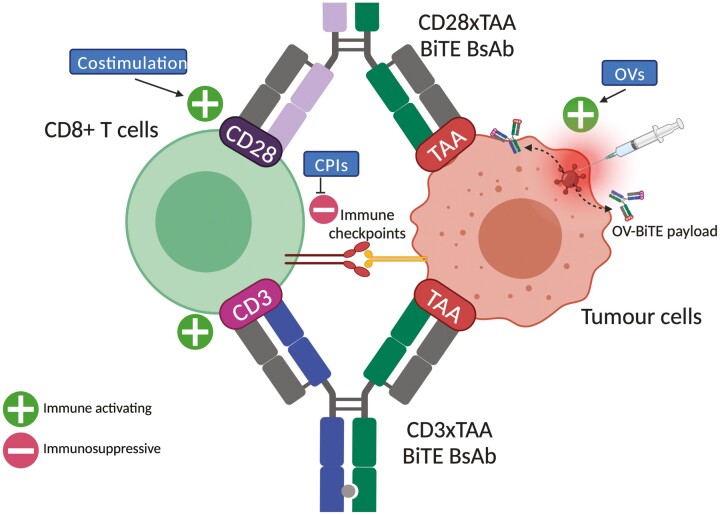Figure 3.
Combination therapies for BiTEs. A depiction of how BiTE combination strategies discussed. Single cell used to represent population of T cells and tumour cells for clarity. BiTE-induced tumour cell killing may be inhibited by immunosuppressive immune checkpoints, indicating that checkpoint inhibitors may synergise with BiTEs. Furthermore, pairing the traditional CD3xTAA BiTE with a CD28xTAA BiTE replicates costimulation (signal 2), leading to better T-cell activation directed towards tumour cells. Oncolytic viruses (OVs) has two distinct mechanisms. Firstly, viral oncolysis promotes inflammation (via the cancer-immunity cycle; Figure 1). Secondly, OVs can also be armed with BiTEs (OV-BiTEs), leading to selective delivery of a BiTE payload to tumour cells. OV-BiTEs may be targeted to tumour cells either by intratumoral injection (as depicted), or selective tropisms that limit replication exclusively to tumour cells. Produced using biorender.com.

